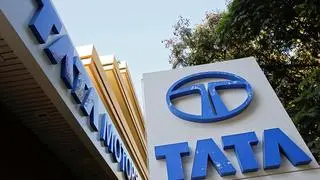A section of the street was quick to give a thumbs up to the dispensations granted by the Reserve Bank of India to the HDFC–HDFC Bank merger. The need to cushion up priority sector loans or PSL spread over a few years and the bank not having to reduce its stake significantly in two critical insurance subsidiaries are seen as big positives from the list of exemptions granted by the regulator last week.
But the street is missing the point that PSL adds up to the assets side of the balance sheet. It is positive from the growth perspective and there is scope to mop up this book even inorganically. Therefore, leeway here, while welcomed, won’t make life easy for the bank post-merger. Same is the case with subsidiaries. If the bank can retain the promoter tag, part stake sale if pursued, would help shore up its capital adequacy.
But like always, the devil lies in the detail. With the most critical ask being turned down by the regulator, HDFC Bank is in for atight rope walk in the next two–three years.
Tricky part
The initial expectation was that RBI may grant some kind of relaxation in the requirement for setting aside reserve ratios, namely statutory liquidity ratio and cash reserve ratio on the balance sheet acquired from HDFC. That has been turned down and somewhere as the bank was closer to seeing the light of day with respect to the merger, it was bracing for life without these dispensations. By allocating a part of its liabilities towards these statutory requirements, the carrying cost of capital is bound to increase, which might, in turn, be negative for its profitability, measured as net interest margin or NIM.
Pressure on profitability
It’s important to note that at 4.1 per cent in the March FY23 quarter, HDFC Bank is among the few banks which has not seen its NIMs move upwards in an increasing interest rate regime, unlike its peers. From around 4.2-4.4 per cent maintained until a few years ago, the number is under pressure and the impact of these statutory reserves could pull down margins by 75–100 bps.
What’s also not getting factored is the RBI’s diktat to rejig the pricing of HDFC’s loan book at par with the pricing formula that banks usually follow. To put things in perspective, being a non-bank, HDFC has a certain flexibility with respect to determining the rate of interest. Currently, the mortgager follows PLR or prime lending rate based pricing, which is repo rate plus a few other costs or charges loaded.
Banks, on the other hand, follow EBLR or external benchmark linked rates, often tagged to the repo rate. Therefore, so far, with every repo hike, banks have had the bandwidth to immediately pass it on to the customer. In PLR, the reset need not happen immediately.
Now, the NIM of HDFC Ltd’s retail book, which is sub-3 per cent, itself isn’t very accretive for the bank post-merger, and to top it, if over ₹3.5-lakh crore of HDFC’s retail book should be repriced based on EBLR, that might further drain HDFC Bank’s NIM. At 8.7–9.6 per cent, HDFC’s rate of interest is a tad higher than what banks offer.
Note to investors
The merger with HDFC will place that bank in a formidable position in the foreseeable future. But at what cost is the question that would hover around it for the next 2–3 years, till the dust settles down on the merger. If an investor is willing to stomach the near-to-medium term pain, the merger associated dislodgement shouldn’t be reckoned as a deterrent. However, for those keen to take a fresh position in the HDFC Bank stock, better entry opportunities may emerge in the next 6–12 months.









Comments
Comments have to be in English, and in full sentences. They cannot be abusive or personal. Please abide by our community guidelines for posting your comments.
We have migrated to a new commenting platform. If you are already a registered user of TheHindu Businessline and logged in, you may continue to engage with our articles. If you do not have an account please register and login to post comments. Users can access their older comments by logging into their accounts on Vuukle.